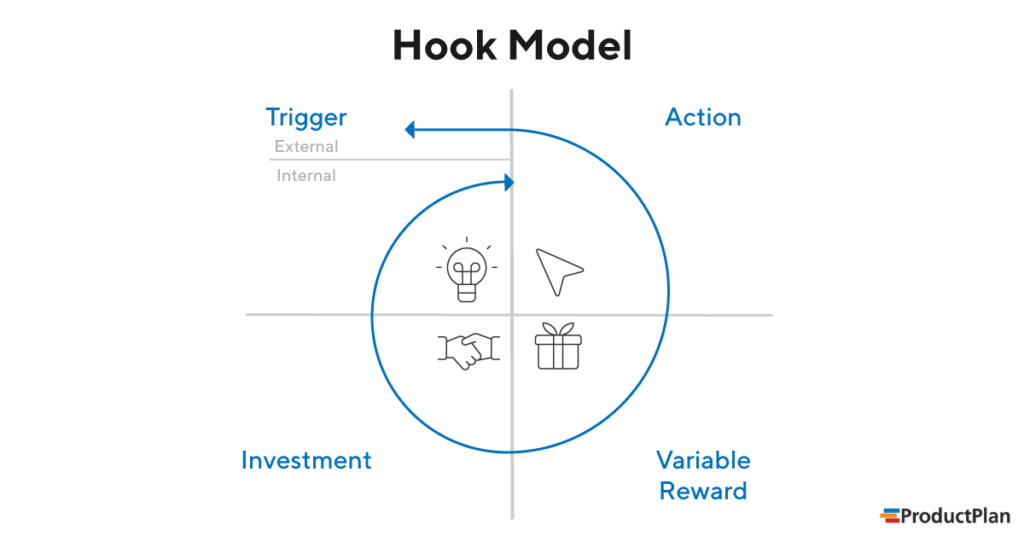What is the Hook Model?
The Hook Model is a four-phase process that businesses can use to create products or services used habitually by customers. The goal is to result in voluntary, high-frequency engagement. At its core, the Hook Model is about creating a customer habit. It also seeks to connect a customer’s problem to a company’s solution with enough frequency to make the engagement an ongoing practice.

What is the History of the Hook Model?
Entrepreneur, author, and behavioral economist Nir Eyal developed the Hook Model methodology. His approach to product development is based on the creation of habitual behaviors via a looping cycle that consists of a trigger, an action, a variable reward, and ongoing investment.
Read more about Eyal’s work here.
Why is the Hook Model Important?
It’s important to understand what drives customer behavior in order to build products that customers use habitually. With this knowledge, you can then create a significant competitive advantage for businesses. Product teams and product managers should use the Hook Model early in the product development process because it ensures that new products or services become habit-forming.
Key Concepts
A habit is defined as an “automatic behavior triggered by situational cues.” By using the Hook Model, businesses can fundamentally alter customer behavior by creating recurring actions, or habits, around products or services.
To accomplish this, companies can guide customers through a series of experiences called “hooks.” The more customers experience these hooks, the more likely it is that the hooks will then become habit-forming.
The Hook Model consists of the following phases:
- Trigger (External or Internal): This is the actuator of behavior. It cues the action that then builds a habit.
- Action: Behavior executed in anticipation of the reward.
- Variable Reward: The problem that’s solved because of the action taken reinforces the cycle of behavior. Reward types include Rewards of the Tribe (social rewards based on connection and acceptance), Rewards of the Hunt (search for material resources), and Rewards of the Self (personal gratification in the form of mastery or self-realization).
- Investment: An action that improves the product or service in the future.
How do you know if you’ve got a compelling hook? Answer these key questions:
- What’s the internal trigger (i.e., what customers want or need)?
- What’s the external trigger (i.e., what brings them to your product or service)?
- What’s the action?
- What’s the reward?
- How do you increase customer engagement with the product in the future?
Only by understanding what truly matters to users can you correctly match the right variable reward with the intended customer behavior. Rewards must fit into the narrative of ‘why’ the product is used and align with the user’s internal triggers and motivations.
Related terms: Behavioral Product Management, Customer Development, Customer Empathy, Product Development Process, Product Excellence.